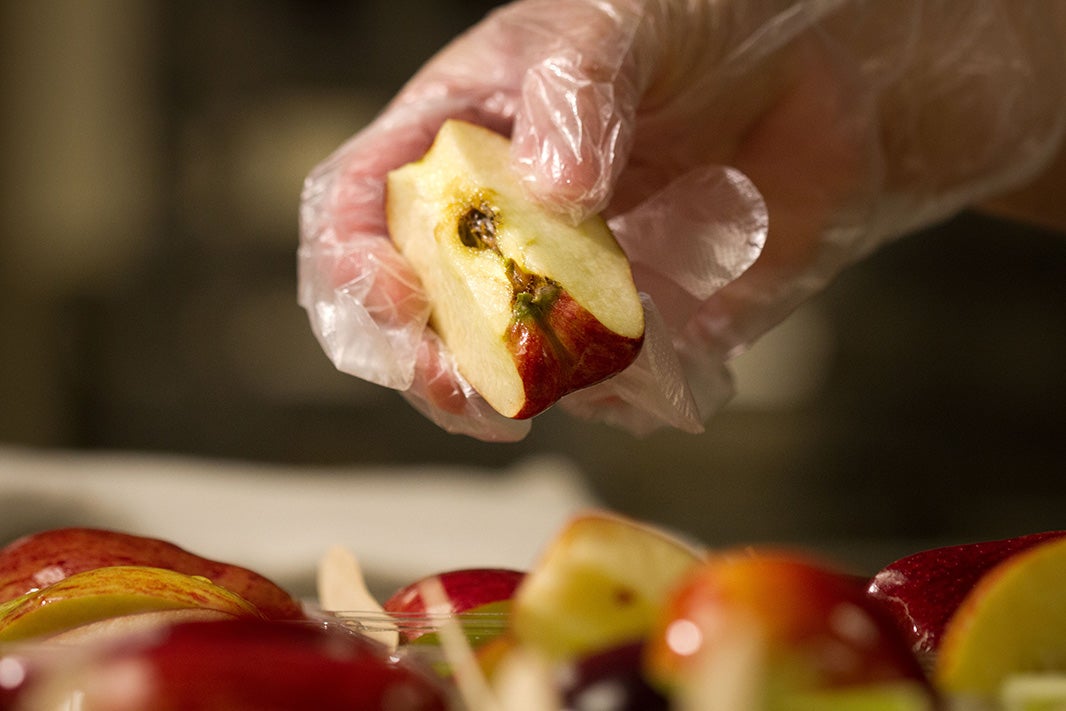EPA Refuses To Ban Pesticide Linked To Poisonings And Damage To Children’s Brains
EPA ignores overwhelming scientific evidence of harm from chlorpyrifos—leaves children, families, and communities at risk
Contact
Today, the Environmental Protection Agency (EPA) announced it will not ban chlorpyrifos—a dangerous neurotoxic pesticide widely used in agriculture and linked to many health hazards, particularly damage to children’s brains.
EPA wants to engage in further study of the scientific evidence of adverse neurodevelopmental harm to children. It contends putting off a decision for what could be many more years complies with a court order to act by March 31, 2017, because “the court’s order does not and cannot compel EPA to complete the registration review of chlorpyrifos in advance of the October 1, 2022, deadline” in the statute.
“EPA’s refusal to ban this dangerous pesticide is unconscionable,” said Patti Goldman, the Earthjustice managing attorney handling the case. “EPA is defying its legal obligation to protect children from unsafe pesticides. We will be going back and asking the court to order EPA to take action now, rather than in 5 more years.”
“EPA turned a blind-eye to extensive scientific evidence and peer reviews documenting serious harm to children and their developing brains, including increased risk of learning disabilities, reductions in IQ, developmental delay, autism and ADHD,” said Miriam Rotkin-Ellman, Senior Scientist at NRDC. “Today’s decision means children across the country will continue to be exposed to unsafe pesticide residues in their food and drinking water.”
“This decision is outrageous. EPA has essentially caved to corporate pressure, failing to follow overpowering scientific evidence of harm to children’s brains,” said Kristin Schafer, policy director for Pesticide Action Network. “The new administration’s agency ignored the findings of their own scientists that all exposures to chlorpyrifos on foods, in drinking water, and from pesticide drift into schools, homes and playgrounds are unsafe.”
Chlorpyrifos is an organophosphate insecticide that is sprayed on a variety of crops including, apples, oranges, strawberries, and other foods that are widely consumed by children.
Chlorpyrifos, in use since 1965, can cause long-term damage to children’s developing brains and nervous systems at low levels of exposure during pregnancy and early childhood. It is also acutely toxic and causes systemic illnesses to people by inhibiting the body’s ability to produce cholinesterase, an enzyme necessary for the proper transmission of nerve impulses. Once exposed to chlorpyrifos, people can experience a range of symptoms from nausea, vomiting, headaches, and dizziness to seizures, paralysis, and even death in some instances.
“Without the ban, farmworkers, their children and others can’t escape exposure because the poison is in their air they breathe, in the food they eat, the soil where children play,” Erik Nicholson, National Vice President of United Farm Workers. “We all have a basic right to a healthy life.”
Seventeen years, ago, the EPA eliminated all home uses of the pesticide, but re-approved its use in agriculture, allowing continued risk of poisoning of farmworkers, their children and rural families, and dismissing the growing evidence that prenatal exposures damage children’s brains.
Last November, EPA released an updated assessment of the risks linked to chlorpyrifos and concluded that its current safety standards were not enough. The EPA, citing studies from Columbia University, University of California, Berkeley and other prestigious academic institutions, found that prenatal exposure to chlorpyrifos is correlated with lower IQ, loss of working memory, attention deficit disorders and developmental delays. The EPA, academic researchers and the EPA’s own Scientific Advisory Panel found that brain damage can occur even at far lower levels of chlorpyrifos exposure than those needed to cause acute poisoning.
As a result, EPA lowered the allowable level of exposure to chlorpyrifos and found the following alarming risks:
- All exposure to chlorpyrifos through food exceeds safe levels of the chemical. The most exposed population is children between one and two years of age. On average, this vulnerable group is exposed to 140 times the level of chlorpyrifos the EPA deems safe.
- Chlorpyrifos contaminates drinking water
- Chlorpyrifos drifts to schools, homes, and fields in toxic amounts at more than 300 feet from the fields
- Workers face unacceptable risks from exposures when they mix and apply chlorpyrifos and when they enter fields to tend to crops
Ordered by a court to take regulatory action by March 31, 2017, EPA is now refusing to revoke all chlorpyrifos tolerances. A ban would have ended all uses of chlorpyrifos on food crops, which constitutes the vast majority of applications.
Related resource: What You Should Know About Chlorpyrifos

Additional Resources
About Earthjustice
Earthjustice is the premier nonprofit environmental law organization. We wield the power of law and the strength of partnership to protect people's health, to preserve magnificent places and wildlife, to advance clean energy, and to combat climate change. We are here because the earth needs a good lawyer.